Are you wondering how to get a good jazz guitar tone? On this page, you will learn how your favorite jazz guitar player gets his unique sound, besides using his ears and fingers. Discover what kind of guitars, guitar amps, strings, picks and effects the jazz greats use.
Joe Pass’ Guitar Gear
Joe Pass – Guitars
Fender Jazzmaster
Joe Pass used to play a Fender Jazzmaster during his stay at the Synanon Center in California, where he tried to kick drugs.
After 15 months in Synanon Joe Pass recorded Sounds of Synanon in 1961 together with Arnold Ross, another Synanon resident. During his stay Joe Pass didn’t have a guitar of his own, he used this Fender guitar that was owned by the Synanon Rehab Facility.
The Fender Jazzmaster was first introduced in 1958 and was originally marketed at jazz guitarists. However, The Jazzmaster wasn’t embraced by the jazz musicians, but it became popular amongst surf rock guitarists.
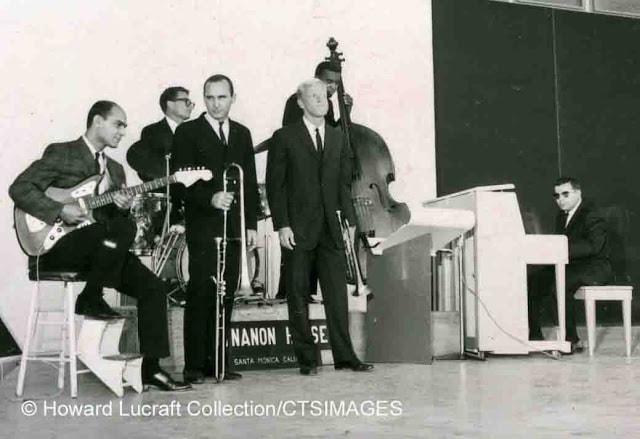
Gibson ES-175
This Gibson guitar, the ES-175, was the main guitar of Joe Pass. He got one for his birthday from a guy named Mike Peak in 1963, who saw Joe Pass playing jazz on a solid body (the Fender Jazzmaster).
Other jazz guitarist who played the Gibson ES-175 include Jim Hall, Pat Metheny, Wes Montgomery (in the early days), and Kenny Burrell.
D’Aquisto Guitars

In 1970 Joe Pass started playing a D’Aquisto guitar. The guitar had one pickup and was built specifically for Joe.
A good example of the D’Aquisto at work is Two For The Road, a duo album with Herb Ellis.
Ibanez JP20
From 1980-90 Joe Pass was under contract with Ibanez and they made him a signature model based on his D’Aquisto.
It is said that Joe didn’t really like his Ibanez signature guitar and he didn’t perform on it that much.
Most accounts from people in the United States from this time period have Joe playing the D’Aquisto, but many reports from other countries say Joe played the Ibanez. The speculation is that Joe played the Ibanez rather than travel internationally with his D’Aquisto.
The Ibanez JP20 was discontinued in 1991 and suffers a reputation for a thin tone due to its pickup placement (too much in the middle, not close enough to the neck).
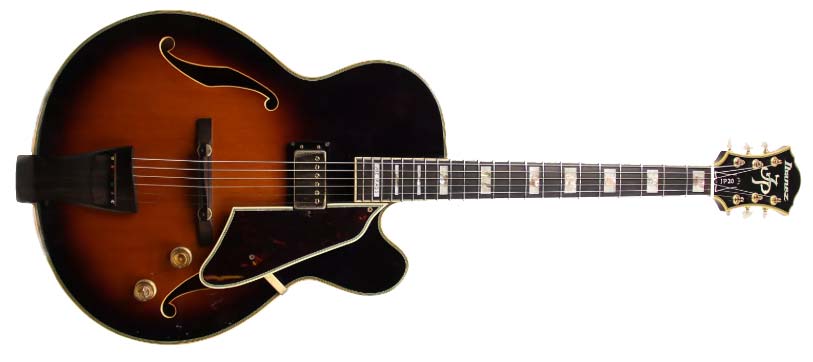
Other Guitars
- 1901 Martin 00-42 – Joe played this guitar when he was young.
- Gibson L5
- Gibson Super 400
Joe Pass – Amps
Polytone Mini-Brute
Joe Pass used a Polytone Mini-Brute amp, a compact solid state amp with 110 watts going through a 12″ speaker.
Other jazz guitarists using this amp include Jim Hall, Herb Ellis, and George Benson.
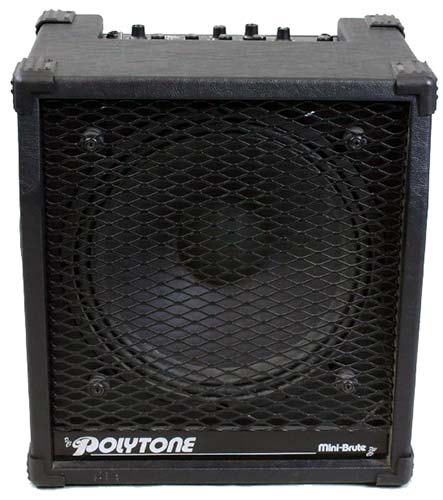
Joe Pass – Strings
Joe Pass used D’Aquisto Flatwound Strings with a 013 to 056 gauge.
Joe Pass – Picks
Joe Pass used a medium thin gauge pick, not soft, but firm. In an interview, he says he always uses the same kind of pick, broken in two.
Pat Metheny’s Guitar Gear

Pat Metheny was one of the pioneers of using electronic equipment in his music and until now he’s always been looking for innovative instruments.
The first ten years of his musical career he wouldn’t play anywhere without his guitar rig. He would not play unless he could use his own gear.
That changed when he went on tour in the USSR and had to play on a Polish guitar. When he heard the tape the next day, he was surprised that his sound was there, no matter what guitar he played.
Pat Metheny – Guitars
Gibson ES-175N (1960)
Pat Metheny used his Gibson ES-175 for almost 20 years. He bought the guitar at a garage sale in Lee’s Summit and he has been playing it since he was 13 years old.
Pat made some modifications to the guitar, such as removing the bridge pickup and installing a Roland midi pickup. He uses a toothbrush in the guitar’s tailpiece to guide his guitar cable.
Pat says he never had any repair work done to the guitar, although it was falling apart.
To get the dark tone that he likes, he turns the tone control almost completely off.
The Gibson ES-175 was and is very popular amongst jazz musicians. Some other guitarists that used an ES-175 include Wes Montgomery and Pat Martino in their early years, Joe Diorio, Jimmy Raney, Toots Thielemans, Joe Pass, Herb Ellis, Jim Hall, Steve Howe, B.B. King, Mark Knopfler, Keith Richards, Howard Roberts, and many more.
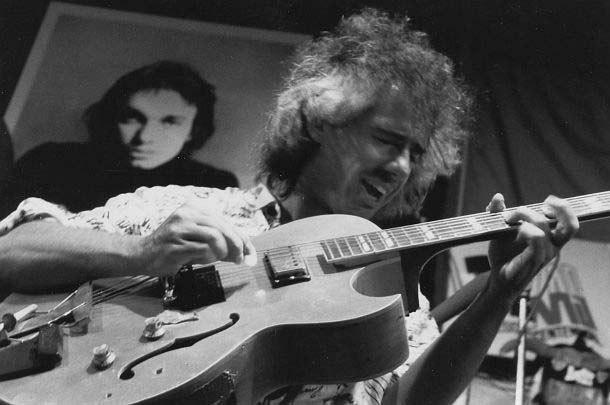
Ibanez PM100 NT – Ibanez PM100 BK – Ibanez PM120 – Ibanez PM200 NT
The Ibanez PM100 is one of Pat Metheny’s signature guitar models and is his current main guitar. He started playing Ibanez somewhere in the mid-90s when his Gibson became too fragile to travel with.
Pat Metheny owns a couple of PM100s, modified to his special needs. Besides the PM100 model with a natural finish, he also plays a black version (Ibanez PM100 BK).
On the album Live -> Trio, he plays the prototype of the Ibanez PM120, which has only one pickup (the production model has two).
Pat likes the fact that the tone control is more responsive compared to the Gibson ES-175. He doesn’t have to turn it all the way down to get the sound he likes.
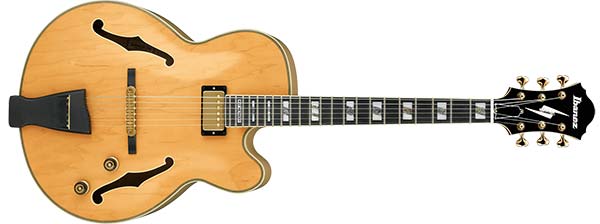
Roland G-303 Guitar Synthesizer Controller + Roland GR-300
Pat Metheny uses the Roland G-303 guitar synthesizer controller 6-string in conjunction with the Roland GR-300 guitar synthesizer.
The Roland G-303 was made from 1980 to 1984 and was Roland’s most popular guitar synth controller. It is a high-quality guitar and doesn’t require guitarists to modify their playing style.
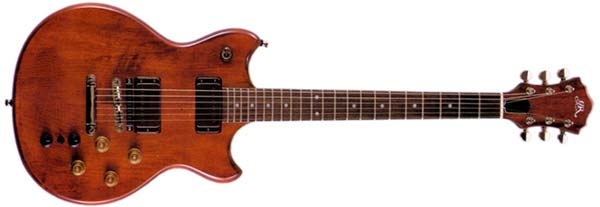
Linda Manzer Guitars
Luthier Linda Manzer made most of Pat Metheny’s acoustic guitars in recent years.
Linda is a Canadian luthier who met Pat over 20 years ago and has been building instruments for him ever since.
According to Pat one of the reasons he began playing acoustic guitar is because of a 6 string made by Linda (called the “Linda 6” by Pat). The “Linda 6” is equipped with a Takamine pickup and was the guitar used to record Lonely Woman on the Rejoicing album.
Pat also plays on a Linda Manzer nylon string, the Manzer Pikasso guitar (42-string), the Manzer Sitar, the Manzer Baritone, the Manzer flattop 12-string, the “Little Manzer”, Manzer “The Studio”, the Manzer Mini Archtop, and more. He owns 13 Manzer guitars in total.
Other Guitars
Here are some of the other guitars used by Pat Metheny throughout the years:
- Gibson ES-140 (Pat’s first guitar, bought for $60 when he was 11 years old).
- Gibson ES-150
- Fender Mustang (Pat’s second guitar).
- 1956 Gretsch 6120 Chet Atkins
- Höfner Zoller AZ Standard (the guitar of his friend and Hungarian jazz guitar player Atilla Zoller).
- 1961 Gibson L-5 CES (this guitar was previously owned by Wes Montgomery, and later George Benson. It’s the guitar on the cover of Wes Montgomery’s album Movin’ Wes).
- Guild dreadnaught cutaway (permanently in Nashville tuning).
- 1985 Ovation 1163 Classic Cutaway
- Sadowsky solid body nylon stringed guitar
- Daniel Slaman DS-150/250
- Guild D-40C
- Paul Kinny acoustic stereo guitar
- Coral electric sitar
Pat Metheny – Amps
Acoustic 134
Pat Metheny used this amplifier for 20 years, from 1974 to 1994.
He describes the sound as flat, kind of midrangy-bright, but mellow and loud without any distortion. The problem was that this amp was really noisy and tended to break a lot.
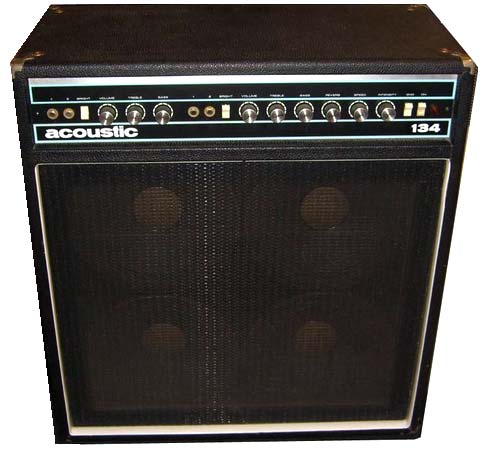
Digitech GSP-2101 Guitar Preamp
During his Joshua Redman tour, Pat realized he finally would have to modernize. He started trying everything and finally settled for the Digitech GSP-2101 preamp.
With this preamp, he could get his sound, reliability and some bells and whistles (mainly programmability).

Kemper Profiler
Lately, Pat Metheny has been using a Kemper Profiler in combination with Bose L1 Compact System speakers.
In his own words:
I’ve been using the Kemper for this last year and it’s been an incredible new development for me and my life as a musician. This has offered me a completely new way of getting my sound that I would not have believed possible and I’ve been having such a great time learning it as a new instrument.
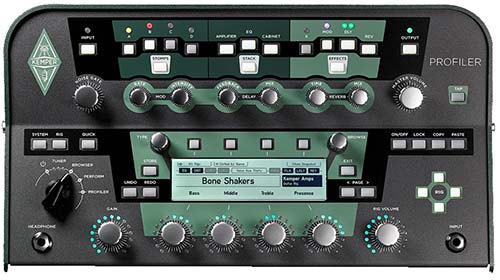
Other Guitar Amps
- Ashly Mosfet 200 power amp routed to JBL speakers.
- Crest 6001 stereo power amp.
Pat Metheny – Guitar Effects
Lexicon Prime Time II Digital Delay
The output of his Digitech preamp, just like the Acoustic 134, is connected to 2 Lexicon digital delays, one on his left at 14 ms and one on his right at 26 ms. Each delay has a slight pitch bend controlled by a VCO (sine wave), which makes his guitar sound chorused.
It’s this ‘natural’ chorus that Pat is after since he doesn’t like chorus coming out of a box.

Roland GR-300 Guitar Synthesizer
The GR-300 is one of the first guitar synths (1979) and Pat Metheny was one of the first jazz guitarists who used it, in combination with the Roland G-303 guitar synthesizer controller.
According to Pat, this guitar synthesizer was the first one that had a musical quality to it, it picks up every detail in terms of attack and dynamics.
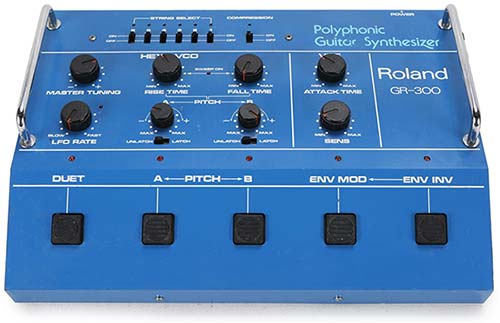
Roland VG-8
The Roland VG-8 is a guitar modeling processor that emulates the sound of popular guitars, amps, and microphones. It’s a combination of a pick-up installed on the guitar and a floorboard.
Pat uses it to create synth-type sounds, on Imaginary Day for example.
Other Guitar Effects
- Roland FC-300 Midi Footswitch
Pat Metheny – Guitar Strings
Pat Metheny uses light-gauge D’Addario strings exclusively.
- D’Addario EXL115 Nickel Wound, Medium/Blues-Jazz Rock 11-49
- D’Addario EJ16 Phosphor Bronze Acoustic Guitar Strings, Light, 12-53
- D’Addario EJ21 Nickel Wound, Jazz Light, 12-52
Pat Metheny – Guitar Picks
- D’Addario Duralin Standard – Super Light Duralin (.50mm)
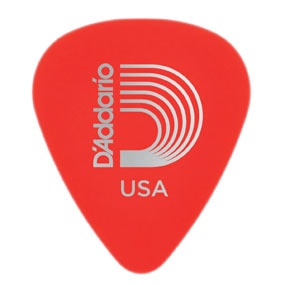
Wes Montgomery’s Guitar Gear
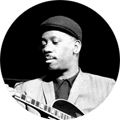
Wes Montgomery was not interested at all in guitar equipment, he saw his guitar as a tool to do the job.
In his own words:
I got a standard box. I don’t never want nothing special. Then if I drop my box, I can borrow somebody else’s.
Keep in mind that Wes Montgomery played with his thumb rather than with a guitar pick and this is a major characteristic of his guitar sound.
There are some misconceptions about Wes Montgomery’s playing and gear:
- It is commonly thought that Wes played with his tone knob rolled off. This is not true, he was always trying to get more treble from his pickup to compensate for the mellowness of using his thumb.
- Some sources say that his guitar amps were modified so they had a better response time. This is also not true.
- It is said that Wes never played unplugged. This is also not the case, he practiced unplugged a lot.
Wes Montgomery – Guitars
Gibson L-5 CES EB
During his entire career, Wes Montgomery played almost exclusively on a 1963 Gibson L-5 CES (cutaway electric Spanish).
Gibson produced this guitar since 1922 and is still in production today. It was the favorite rhythm guitar in big bands.
The L5 was the first Gibson guitar with f-holes.
Gibson made 3 custom guitars for Wes Montgomery, but they only had 2 differences compared to standard L-5: 1 pickup instead of 2, which was placed upside down.
Other guitarists that use the Gibson L-5 are Tuck Andress and Pat Martino.
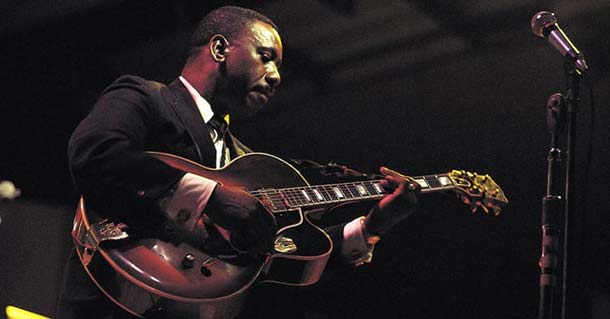
Other Guitars
- Wes Montgomery played a Gibson L-7 on the recordings of The Wes Montgomery Trio (1959). The L-7 was loaned to him by Kenny Burrell, together with a Fender Deluxe amp.
- Gibson L-4 with a Charlie Christian bar pickup.
- Gibson ES-175: this is the guitar he is holding on the cover of Movin’ Wes.
- Gibson ES-125D
Wes Montgomery – Amps
Wes Montgomery never really found the amp that sounded the way he wanted it to.
Fender Super Reverb
Wes Montgomery used a Fender Super Reverb in his early years. This tube amp has 4 10-inch speakers.
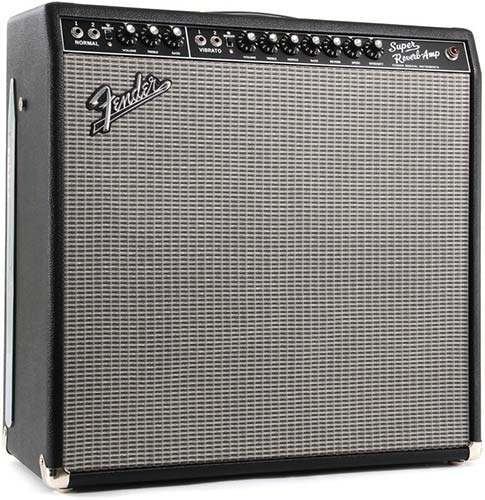
1965 Standel Super Custom XV
In his later years, Wes Montgomery played this Standel amp. The Super Custom XV has 2 channels, a normal one and a reverb/vibrato one. The amplifier has 70 watts RMS and a JBL speaker.
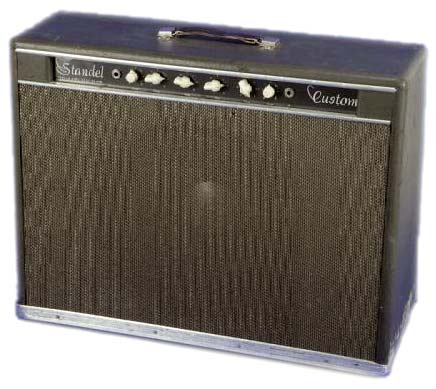
Fender ’65 Twin Reverb
After the Standel, Wes played on a Fender Twin Reverb.
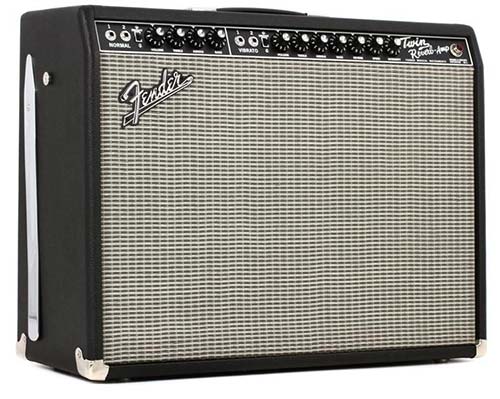
Wes Montgomery – Strings
Wes Montgomery used Gibson HiFi Flatwound strings on his guitars going from 014 to 058.
Wes Montgomery – The Thumb
Wes Montgomery didn’t use picks, he used his thumb for picking. He once tried using a pick for some weeks, but it never produced the sound he liked, although it enabled him to play faster compared to using his thumb.
He used the fleshy part of his thumb, not his nail, and played only down strokes for single note lines and up- and down strokes for chords.
Wes had a corn on his thumb. One sound he got from the soft parts of his thumb, another more edgy one from that corn.
His thumb was double jointed, he could bend it all the way back to his wrist.
The post Famous Jazz Guitarists and Their Guitar Gear appeared first on Jazz Guitar Online | Free Jazz Guitar Lessons, Licks, Tips & Tricks..

from Jazz Guitar Online | Free Jazz Guitar Lessons, Licks, Tips & Tricks. https://ift.tt/2NxG85y



 Jessica Gouthro from Paleohacks
Jessica Gouthro from Paleohacks A glute ham raise is an eccentric, or muscle lengthening, exercise that involves a fixed location of the feet, ankles, and hips and a hinge only at the knee joint. By securing the foot position and starting with a bent knee, we enable the hamstring to lengthen eccentrically against gravity using only our own body weight.
A glute ham raise is an eccentric, or muscle lengthening, exercise that involves a fixed location of the feet, ankles, and hips and a hinge only at the knee joint. By securing the foot position and starting with a bent knee, we enable the hamstring to lengthen eccentrically against gravity using only our own body weight.















 We get lots of questions about how a ketogenic diet works in the context of exercise: Is it possible to maintain one’s fitness (strength, endurance, performance) and also drop one’s carb intake to ketogenic levels? Is it advisable? Will it help me lose weight faster?
We get lots of questions about how a ketogenic diet works in the context of exercise: Is it possible to maintain one’s fitness (strength, endurance, performance) and also drop one’s carb intake to ketogenic levels? Is it advisable? Will it help me lose weight faster?
















